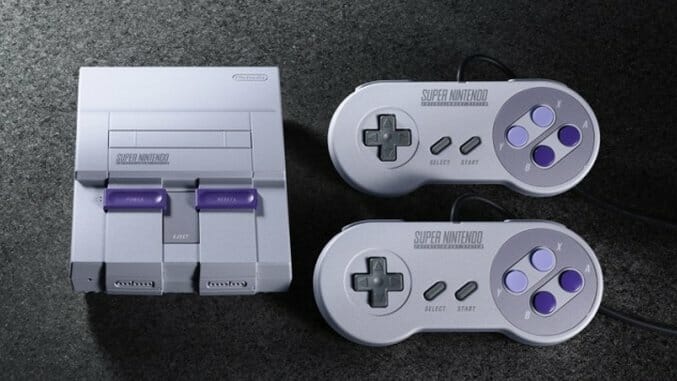The SNES Classic: A Midlife Crisis in a Box
Photos courtesy of Nintendo
You can’t separate Nintendo from nostalgia. It’s become the company’s calling card, a constant that courses through every new game and system that it makes. It’s why the Super Nintendo Classic Edition sold out everywhere before it was ever released, just like last year’s impossible-to-find NES Classic. Nintendo clearly has no problem capitalizing on that nostalgia, but to the company’s credit it doesn’t let the past dominate its future; its three most recent consoles have all been built on idiosyncratic ideas, and two of the three have been massively successful. And even its purely nostalgic plays, like the SNES Classic, are buoyed by one simple fact: Nintendo games are generally pretty great.
The SNES Classic’s 21-title library features some of the best designed videogames ever made, playable in HD on a modern TV set. In the 1980s Nintendo introduced or enhanced many of the core gaming concepts that would carry the industry through the end of the 20th century. In the 1990s the company expanded and refined those ideas on the SNES, finding so much new potential in its classics that simply wasn’t possible on older technology. Games like Super Metroid and The Legend of Zelda: A Link to the Past aren’t just “bigger” and “better” than their forebears; they so thoroughly realize what those games were aiming for that they make the older ones feel like mere proofs of concept. Even the games here that weren’t designed by Nintendo, including Final Fantasy III (aka Final Fantasy VI) and Contra III, are simply smarter and better designed than their earlier installments. The early 1990s didn’t just benefit from more powerful technology, but from a class of professional, experienced game designers working at the top of their abilities.
Like the games themselves, the SNES Classic improves on what made the NES Classic great, while preserving what made it valuable. The NES Classic might have tapped into a richer vein of nostalgia, offering a larger and more diverse pool of games, but the SNES Classic presents a better package of gaming experiences going by the standards of both yesterday and today. Something like Super Castlevania IV might still look unplayably archaic to anybody who wasn’t around in the early ‘90s, but in both aesthetic and action it’s more accessible than the 8-bit Castlevanias on the NES Classic. The same can be said about both almost every series that is represented on both devices and the random one-offs that fill out the rosters. (The one major exception is Super Mario World. It can’t compare to Super Mario Bros. 3 on the NES, which is the purest distillation of the Super Mario concept and maybe the greatest videogame ever made.)
The SNES Classic captures not just the sterling craftsmanship that these designers had forged by this point in gaming history, but a burst of creativity from Nintendo that almost rivaled their mid-’80s explosion. The best games on the SNES might be refinements of Metroid and Zelda and Square’s Final Fantasy, but it was also the first system that games like Super Mario Kart, Star Fox, F-Zero and Pilotwings appeared on. (Mysteriously, Pilotwings is not included on the SNES Classic.) Mario’s expansion into the world of role-playing games kicked off with Super Mario RPG: Legend of the Seven Stars, a precursor to the Paper Mario and Mario & Luigi series. Donkey Kong went from classic arcade heavy to a legitimate franchise-carrying hero with Donkey Kong Country, which continues to generate new sequels over 20 years later. Nintendo has introduced iconic new games on almost every system it’s ever released, but the Super Nintendo represents, at worst, its second most-fertile period, and the SNES Classic collects the major hitters into a single box.